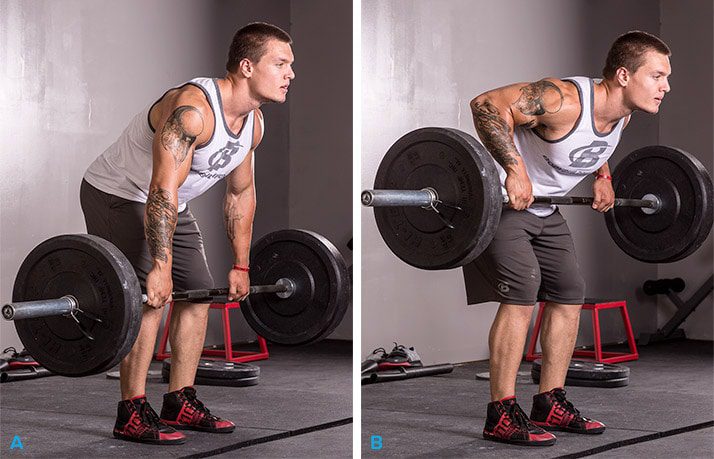Do you pay as much attention to your accessory work as you do to your squat PR and Helen time?
If you call yourself a CrossFitter, the answer is probably no. And that’s a shame.
The best CrossFit boxes prioritize accessory work in their program, but it’s not as common as it should be.
If you aren’t doing accessory work, you are selling yourself short as an athlete. You’re leaving benefits like better performance, decreased risk of injury, and muscle hypertrophy on the table.
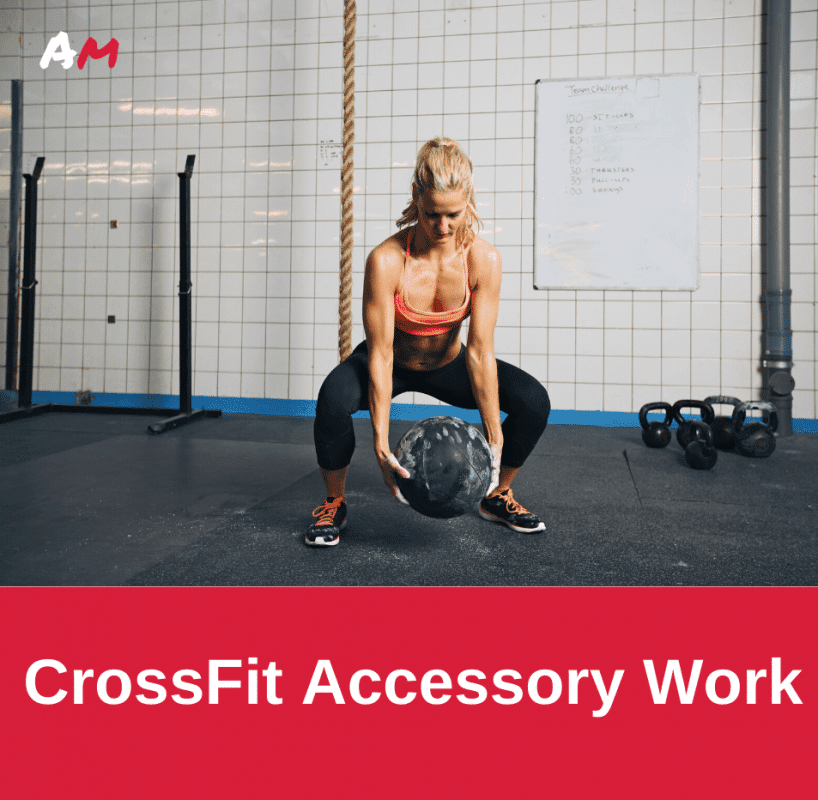
And accessory work doesn’t have to be anything complicated. It might be as simple as an additional 10 minutes of light training after you complete the WOD.
Here is how accessory work and CrossFit work together, and how you can use it to reach your fitness goals:
What is Accessory Work?
Accessory work is movement that helps support and increase the lift or task at hand.
In CrossFit, accessory work might mean dedicating a small amount of time each day to things like:
- Movements you are weak at (double unders, toes to bar, pull-ups, etc.)
- Working small, isolated muscle groups (forearms/grip, calves, triceps, biceps)
- Unilateral exercises (single leg squats, etc.)
- Slightly altered movements that mimic or benefit the compound barbell exercises (variations of the squat, deadlift, press, Olympic lifts)

Accessory work is usually completed after the main workout, and takes anywhere from 5-20 minutes.
While it should not be as taxing as the WOD, it should be challenging enough to see results.
Accessory Work and CrossFit
Think of accessory work as a lower-impact way of eliminating chinks in your fitness armor.
If your goal is to become good at CrossFit, your body must learn to recover from a high volume of training on a consistent basis.
You must practice the foundational movements of the sport on a weekly basis.
And because CrossFit combines barbell movements, gymnastics, cardio exercises, (among others), it can be really difficult to achieve this goal.
Perhaps the most difficult fitness puzzle to solve is to figure out how one should train to become a high-level CrossFit athlete.
It’s a question many people are trying to figure out the answer for. Heck, Rich Froning built a 158k following on Instagram simply branding the account “What’s Rich Doing?”
https://www.instagram.com/p/Bbfh6qyl0tX/
You’ve probably heard the stories about most competitive athletes and their training regimens.
Most complete somewhere between 3-7 workouts per day, and they probably train at least 5-6 days per week.
This is a reason why many competitors at the CrossFit Games are sponsored athletes.
The athletes need all the time they can get to train and recover from their sessions.
The truth is, that kind of volume is too much for most people. If you work a full-time job, go to school, or have kids, you likely can’t complete 3-7 WODs per day.
But here’s where accessory work possesses a type of magic.
This kind of training allows you to slightly hack the system It’s a sneaky way of doing work and accumulating volume without taxing yourself too much.
It allows you to practice movements you aren’t good at yet.
Mastery of the foundational CrossFit movements takes a long time, and there are no real shortcuts.
But no matter your CrossFit goals, a small amount of accessory work each training will make you better at CrossFit.
Accessory Exercises
Here are 8 accessory exercises to get you started:
1. Pendlay Row
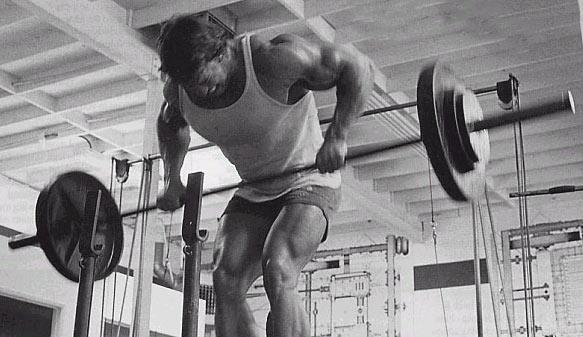
These will improve your pulling strength for Olympic lifts and adding muscle to your upper back.
They are good for increasing any pulling movement in CrossFit, including pull-ups and muscle ups.
Read More: Pendlay Rows – Add These To Your CrossFit Training
2. Glute Bridges
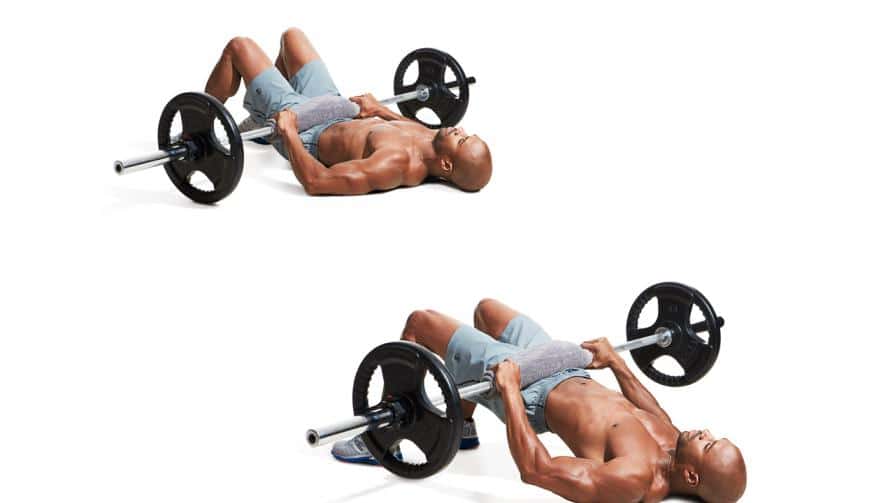
Load a barbell up with bumper plates on each side (start light, but you’ll need plates on each side so you can get underneath the bar). Put a towel or Abmat on your lap if you need it for comfort.
Most humans are anterior dominant, meaning our quads are stronger than our glutes.
Catching up the back side to the front side will contribute to stronger deadlift, squat, and Olympic lift numbers.
The key with glute bridges is the brief pause at the top.
Hold it for 1 (honest) second at the top of each rep and squeeze your glutes for maximum results.
With A Bar
Without A Bar
3. Bicep Curls

Contrary to popular belief, bicep curls are not only for looking good in a tank top.
While they are perceived as sinful to some CrossFitters, you use your biceps in CrossFit for pull-ups, muscle ups, rows, and more.
It’s a good idea to strengthen the smaller muscle groups that help you perform these upper body movements.
Maybe you do want bigger arms, but a few sets of curls will also help keep your elbow joint healthier and stronger for more compound movements.
4. Tricep Extensions

Strong triceps will make you better at pressing overhead and bench pressing.
Barbell or not, there are few training days in CrossFit where your triceps aren’t required to assist a large muscle group in your upper body with moving a load.
It’s probably best to superset these with your bicep curls to maximize your post WOD pump, you meathead. Just kidding. Sort of.
5. Strict Pull-Ups or other Gymnastics Movements
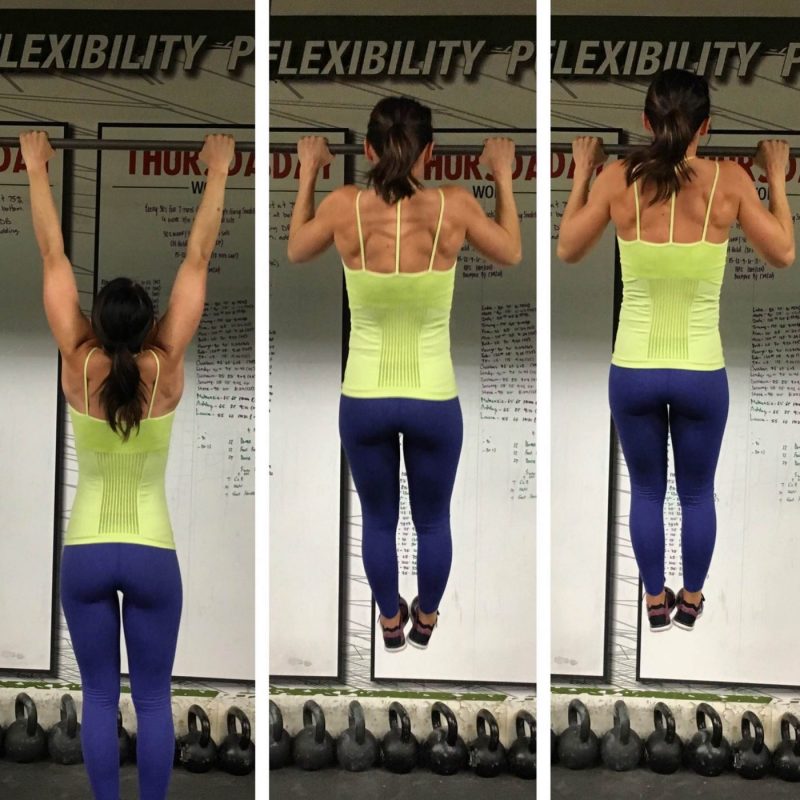
Strict pull-ups, toes to bar, dips, and muscle ups will give you more control of these movements when you are in the middle of a grueling WOD.
You can vary these and make them more challenging by slowing the reps down or adding in slow negatives, too.
6. Plate Pinches

You probably don’t realize how often you use your forearms in CrossFit. But to pick up, hang from, or move anything, you likely have to grip it first.
Your grip strength is a huge determining factor in your ability to max out in many movements.
Add these in a few times per week and you’ll see the benefits of training your grip very quickly.
7. 1-Arm Dumbbell Bench Press
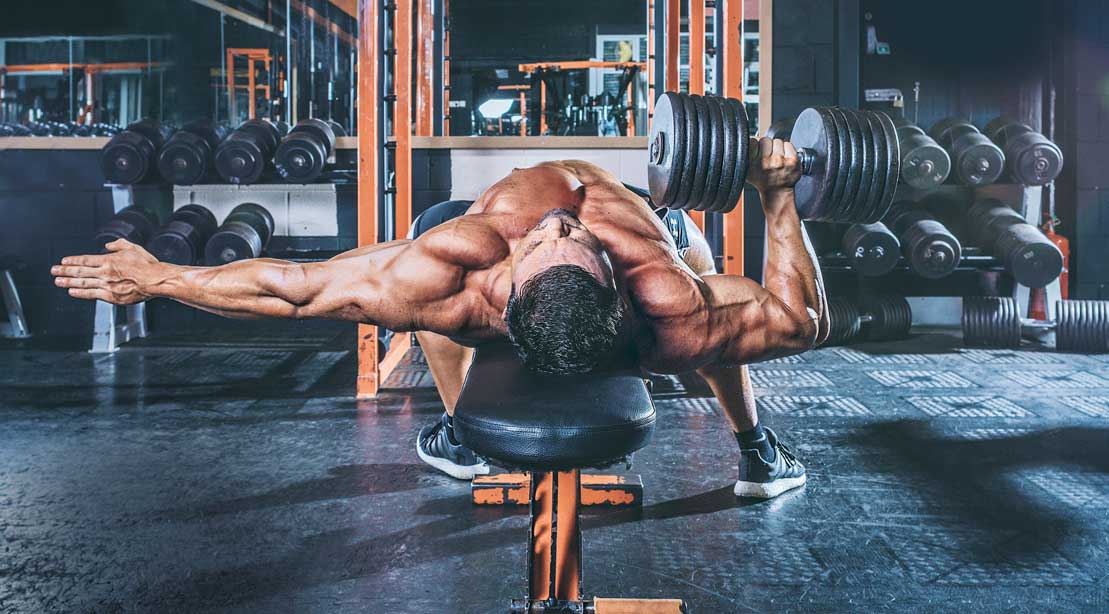
A benefit of anything unilateral (performed on one side of your body) is that your core is forced to stabilize in ways that it isn’t used to.
You may find that your obliques and abdominals are sore after a few sets of 1-arm presses if you fight to maintain a tight, ribs down position with this movement.
8. Rear Foot Elevated Split Squats

If you’ve never tried rear foot elevated split squats, you owe it to yourself to add them into your routine.
They are killer, and will improve the strength of pretty much every muscle group below your waist.
Did you know that many top-tier strength and conditioning coaches have eliminated the back and front squat from their program design entirely?
Many now rely exclusively on one-footed variations of the squat, such as the RFE split squat.
Read Also: Best Knee Sleeves For CrossFit Athletes
The thinking behind it is that most sports require you to run, and running is performed on one leg at a time. This will also help build strength that will transition well into pistol squats.
Why don’t we focus more on strengthening one leg at a time?
Sample CrossFit Accessory Workouts
Here are a few ways you can go about implementing these movements into your routine. Mix and match how you see fit.
3×8-12
The conventional bodybuilding approach works great for assistance work. No need to set a clock, just crank out 3 sets of 8-12 reps. Take 1-3 minutes in between each set to recover.
30:30 x 5
If you want to quantify your accessory work, or you’re crunched for time, this option will work well.
Start a clock. Perform the movement for 30 seconds, then rest for 30 seconds. If you’re using weight, it should be light enough that you don’t fail in the first 3 rounds, but heavy enough that you hate your life right around 20 seconds into the interval.
This can be modified to Tabata (20 sec on/10 sec off) or other minute-long interval variations (40 on/20 off, 45 on/15 off, etc)
Read Also: Deadlifts: What Muscles Are Working? A Complete Guide
EMOM x 7
Pick a number of repetitions, and perform them at the top of each minute (when the clock says (:00). Rest the remainder of the minute.
Accumulate X Minutes
For accessory work like grip training, consider this option. Set a goal of accumulating 3, 5, or 10 minutes in the movement, then work towards it in chunks.
Go until failure, break for a minute or so, then go again. Once you’ve hit your milestone, you’re done with the accessory work.
Benefits of Doing Accessory Work

The weights you’ll be using won’t be too heavy, and this work won’t be done very fast. But that doesn’t mean accessory work doesn’t provide some serious benefits.
Benefits of accessory work include:
- Increased PRs on all barbell movements
- Increased muscle size and strength
- Decreased risk of injury in smaller muscle groups
- Muscle symmetry
- Better form during WODs or high intensity work
You can change up the type of accessory work you’re doing every 2-4 weeks to ensure that you are picking movements and protocols that move you closer to your fitness goals.
The Accessory Muscles
The accessory muscles are the smaller muscle groups that aid the prime mover(s) in performing compound CrossFit Movements.
For example, the triceps serve as accessory muscles to the pectoral muscles when bench pressing.
While the pectoral muscle is responsible for moving most of the load, you can’t complete a bench press without the help of your triceps.
It’s important to remember this. Accessory muscles aren’t any less important than the prime movers, because compound movements (almost every CrossFit movement) require multiple muscle groups to work together simultaneously.
So while we may call smaller muscle groups like the triceps, biceps, and calves as “accessory” muscles, it doesn’t paint the whole picture.
Depending on the exercise being performed, even big muscle groups like the glutes and hamstrings could be an “accessory” muscle group to the prime mover.
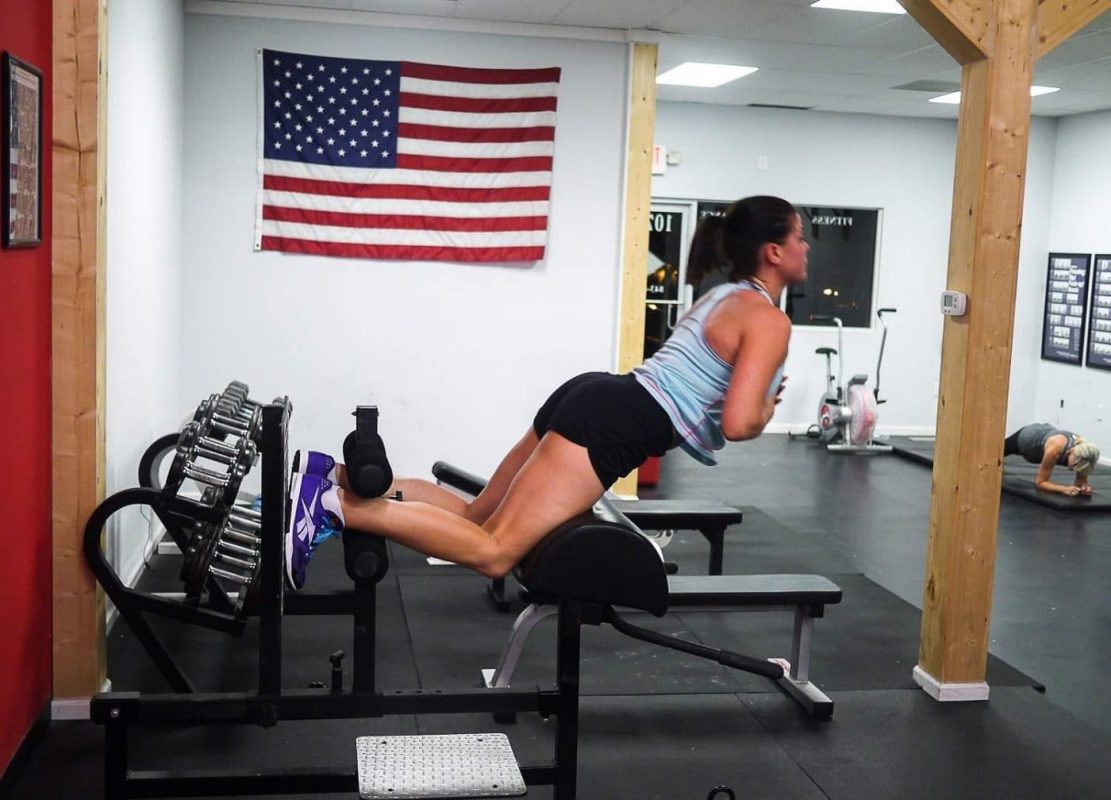
For example, a good accessory exercise for improving your deadlift might be glute-ham raises on the Glute-Hamstring Developer (GHD machine). The GHD machine is a less used, and less well known machine that actually has several benefits for your posterior chain as well for your midline and your abs.
We have identified 5 exercises on the GHD machine here that will help you build a rock solid posterior chain, and increase your lift capacity.
Over time, the extra strength training for your hamstrings will contribute to you moving a heavier barbell down the road.
Other examples:
- Forearm strength and grip training to increase your pull-ups
- Core exercises to increase your squat or deadlift
- Rows to increase your upper back strength for deadlifting/squatting
Implementing Accessory Work Into Your Training
Accessory work doesn’t have to be fancy, and it doesn’t take long. Start to finish it shouldn’t exceed 20 minutes.
Think of accessory work like putting a cherry on your fitness sundae. Don’t overdo it.
Here are a few ways you may consider adding accessory work to your CrossFit training:
Before
Show up 10-15 minutes early and do your accessory work before class starts. The benefit of training before class is that you can practice movements for that day’s WOD.
The obvious drawback of doing accessory work before you train is that you may tax yourself too much. If you choose to do it before, choose light movements that focus on technique over load.
After
Take 10-15 minutes after your workout to focus on movements that will aid your development as a CrossFit athlete.
This is probably the best time to complete accessory work, as you won’t be taking away from the WOD you just completed.
The main thing to consider with adding accessory work after you workout is that you may have already done a lot of training that day, so be careful.
On Rest Days
If you stretch or still go to the gym on days you don’t train, this could be a good time to complete accessory work.
Just be sure that the accessory work doesn’t turn into a full blown training day. Try to be in and out in 30 minutes or less.
Wrap Up
Accessory work is movement that helps support and increase the lift or task at hand.
As a CrossFit athlete, you will benefit significantly from incorporating it into your routine.
While smaller muscle groups like the triceps are classified as “accessory” muscles, larger muscle groups can assist in completing a movement, too.
For example, the glutes are a large muscle group that help during a deadlift. Focusing on developing your glutes will increase your deadlift numbers over time.
Being good at CrossFit requires an athlete to be good at movements that take serious amounts of time and energy to develop.
Accessory work isn’t a short cut, but an approach the normal athlete can take to getting good at all of the foundational CrossFit movements.
Whether it’s 10 minutes before, 15 minutes after, or a quick 30-minute session in between stretches on a rest day, you should find a way to incorporate accessory work into your CrossFit routine.

